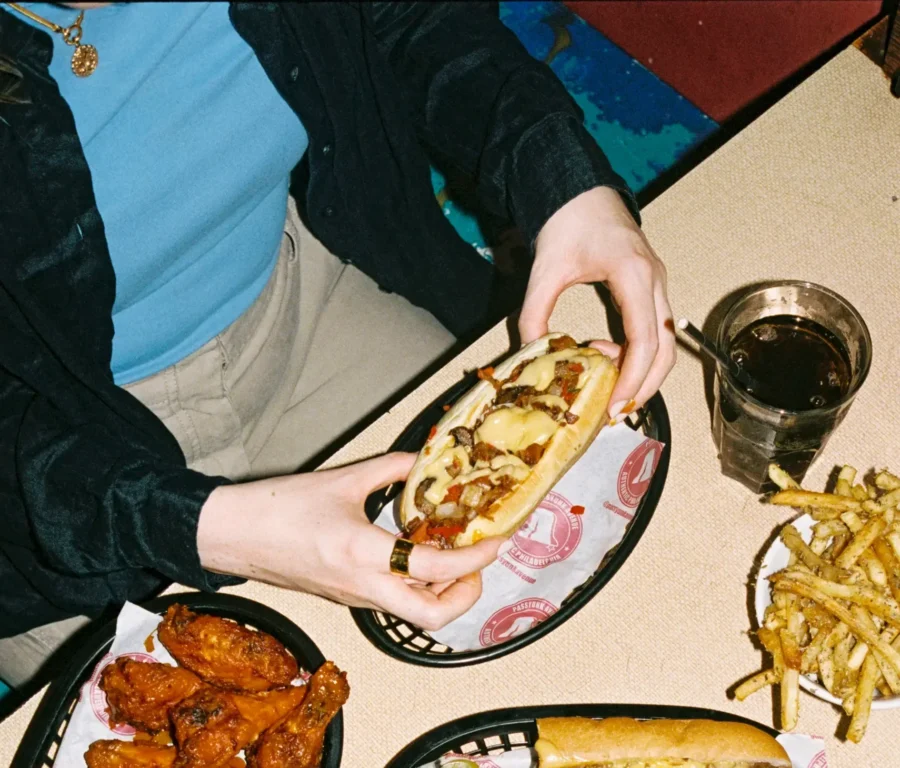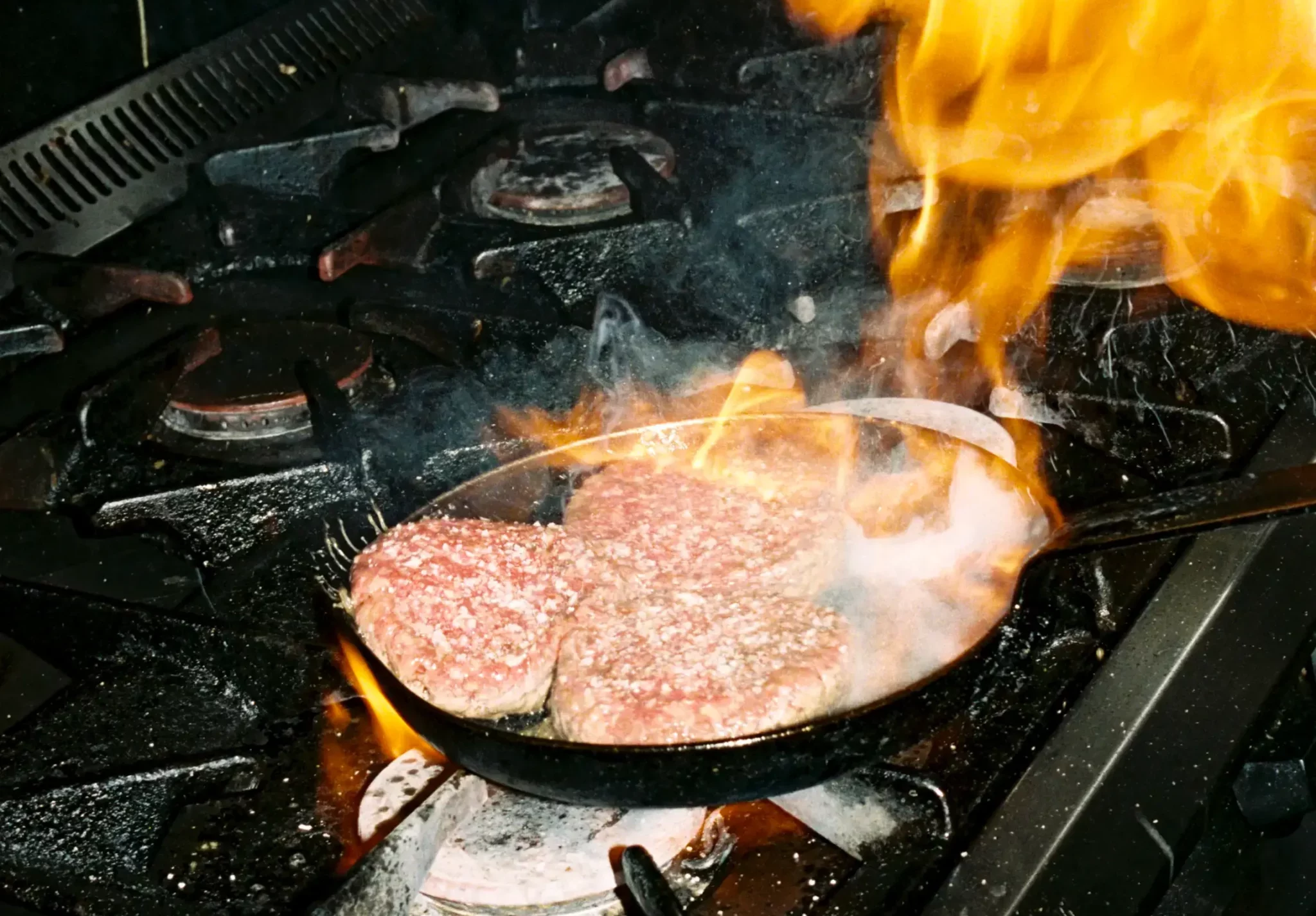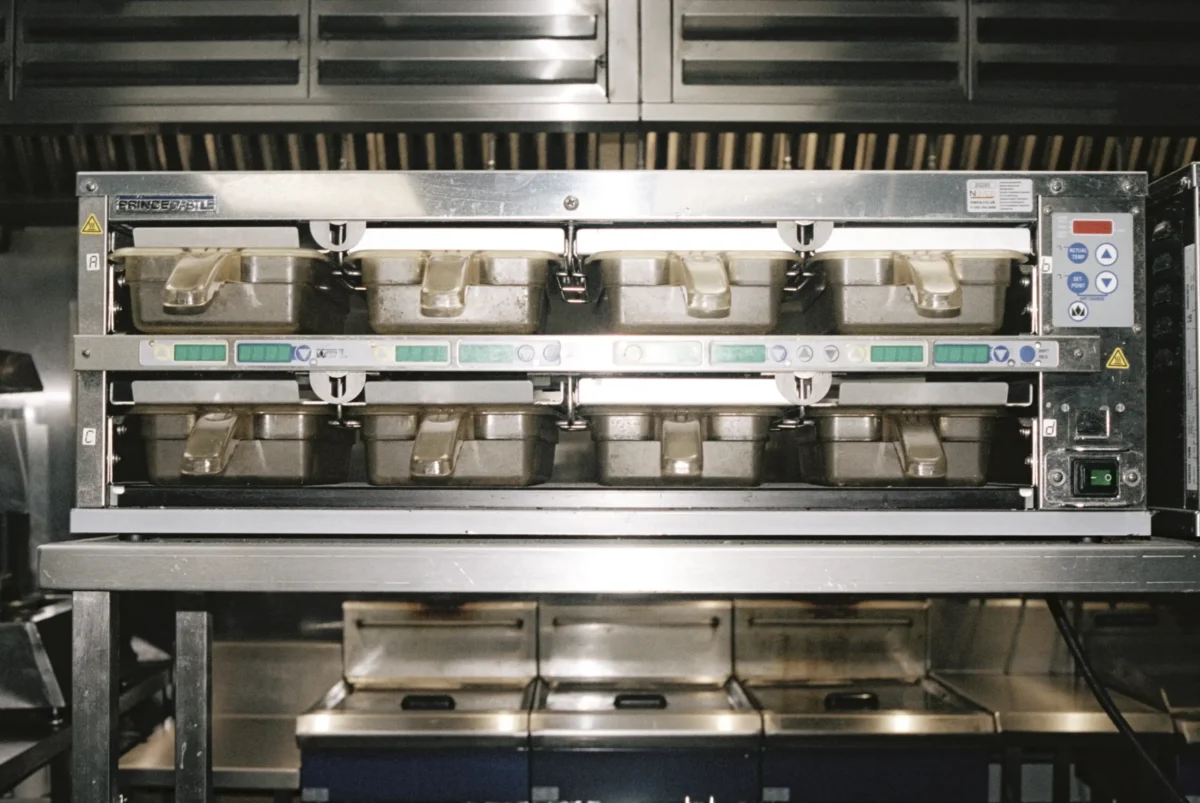Wasting food feels like throwing money away, right? That’s because it is throwing money away.
You buy ingredients that go straight from your supplier, to your inventory storage, to the bin. And not only have you wasted money on these ingredients, but you can no longer generate revenue from them. This impacts your profit margins and your bottom line.
All in all, it’s not good — but it’s not all doom and gloom!
There are plenty of ways to reduce food waste in your restaurant and make as much profit as possible from your ingredients. In fact, 75% of food waste is avoidable.
Keep reading to find out how to reduce food waste in restaurants, how to calculate your food waste, and what the ideal food waste % should be.
How to calculate food waste percentage in your restaurant
Understanding how to calculate food waste percentage in restaurants is key to managing costs and improving sustainability.
The typical formula for calculating food waste is:
Food waste percentage = Weight of food waste / Total food purchases x 100
Here’s a breakdown of how this formula works:
- Take inventory of your ingredients. Start by taking inventory of all the food items you’ve purchased for the restaurant. This includes raw ingredients, pre-made food items, and anything else that’s served to customers.
- Track food items used. Keep tabs on all the food items you use in your menu items, including how much is used in each dish.
- Monitor food waste. Track all discarded food items. This includes spoiled items, damaged food from preparation, and food that customers leave on the plate.
- Calculate the weight of wasted food. Weigh the amount of wasted food by subtracting the total weight of food used from the total weight of purchased food.
With this information, you can determine your percentage of food waste. For example, if you bought 50 kg of food and wasted 10 kg, the food waste percentage would be 20%.
Hot tip 🔥 Let’s not beat around the bush — manually tracking all this information is a headache. Use a restaurant management platform like Nory to track your inventory in real-time.
What should your food waste percentage be?
It’s hard to put a number to this because there are so many variables. The ideal food waste percentage for one restaurant might not be ideal for another.
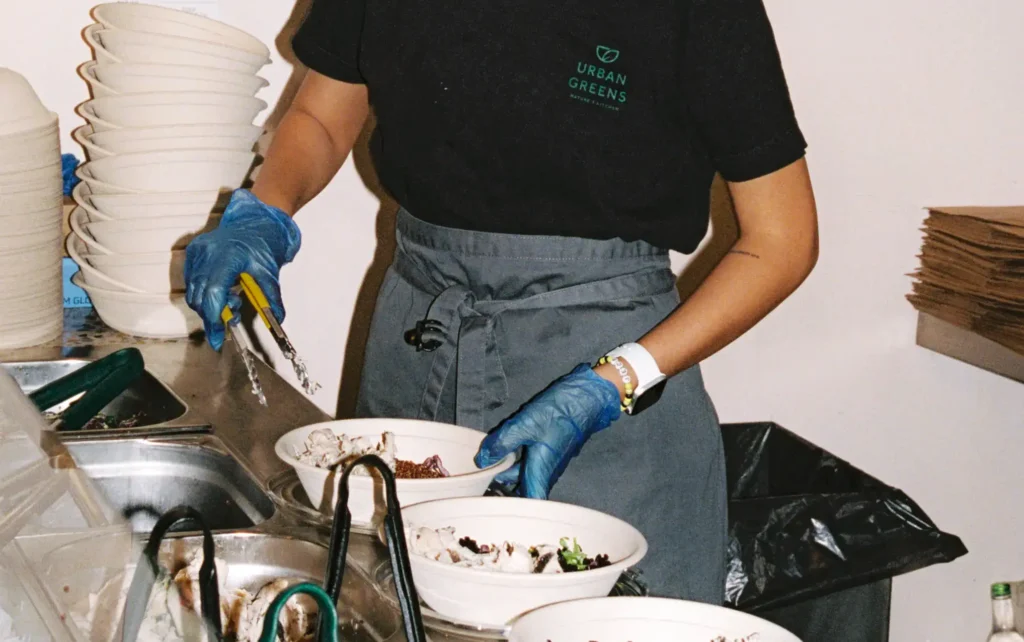
To give you an idea of what to aim for, here are some studies that have analysed the average food waste percentage in restaurants:
- 12kg of food waste per person (9%)
- Restaurants typically waste between 4-10% of purchased food before reaching the customer
Based on these figures, restaurants should be aiming for a food waste percentage of less than 10%. Effective restaurant food waste management can help bring this percentage down and improve your bottom line.
But remember — this percentage might not be right for your restaurant. Figure out what your current food waste percentage is, and go from there.
Food for thought 🤔 The European Commission is proposing food waste reduction targets by 2030 as part of the revision of the Waste Framework Directive. The targets are to reduce waste by:
- 10% in processing and manufacturing
- 30% (per capita) jointly at retail and consumption
These targets don’t apply to the UK, but they’re likely to add pressure to create similar legislation. Not to mention, the UN Sustainable Development Goal is aiming for a 50% reduction in food waste by 2030.
So, if you aren’t thinking about how to reduce your food waste ASAP, now is the time to get started. 2030 isn’t that far away!
How to control and minimise your restaurant food waste
Let’s take a look at some of the ways you can minimise food waste in your restaurant.
1. Avoid over-buying ingredients
Over-buying is one of the top culprits of restaurant food waste. You over-order ingredients but don’t have enough demand to use them all. Inevitably, they spoil and get thrown away.
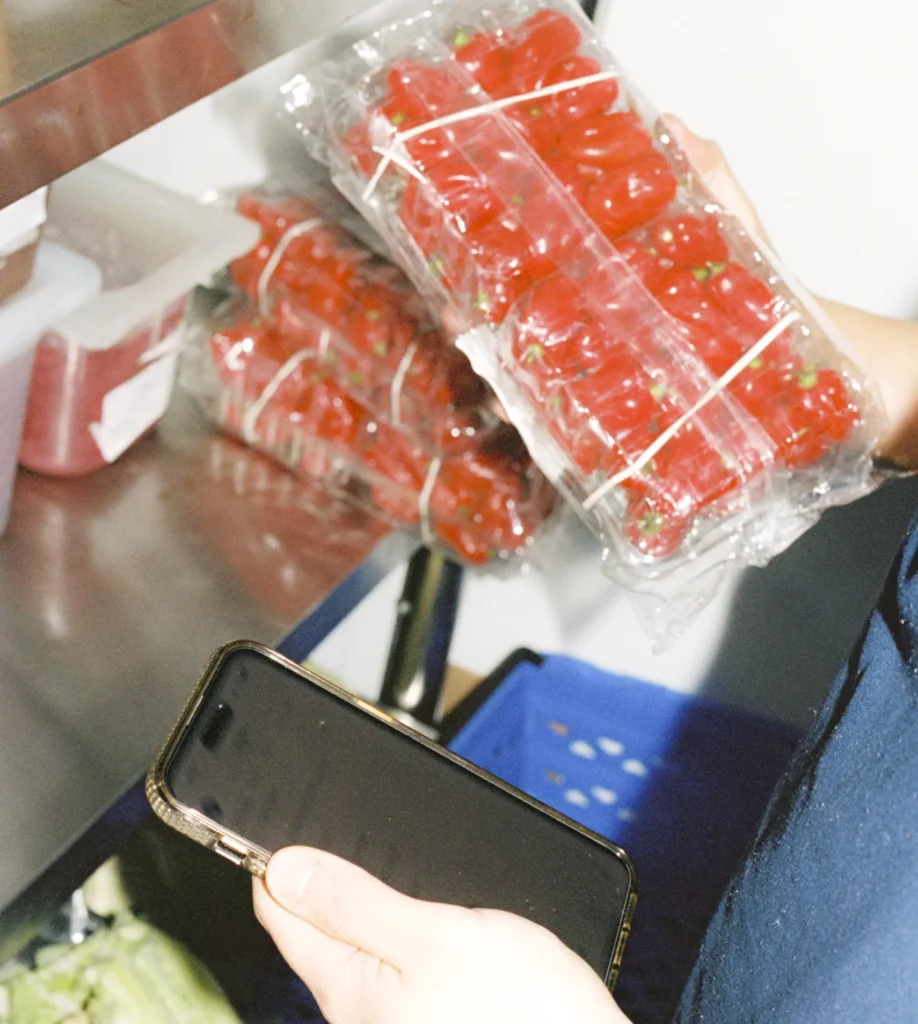
So what’s the best way to avoid over-buying?
When you know how many diners you’ll have over a given period, you can optimise your inventory accordingly. For example, Saturday night is your peak time, so you order more ingredients to cover the demand. Wednesday afternoon is your quietest period
This is where technology shines in hospitality.
With a platform like Nory, for example, you can automatically adjust food orders based on demand. Our AI-powered technology will analyse historical data to predict demand and update your food order automatically.
If you don’t believe us, take a look at CUPP. Using Nory has helped CUPP reduce food waste by 60%. How? By centralising their operations and improving inventory management.
With real-time access to restaurant data, CUPP can now track sales performance, optimise staff schedules, and manage inventory—all from one central platform. Before Nory, their team relied on multiple disconnected systems, making it difficult to get a clear picture of stock levels and food waste.
“Before Nory, we were using Google Sheets, an old ePOS system, and Planday for our scheduling. We had all these different systems that didn’t talk to each other. It simply wasn’t sustainable as we grew.”
Paul Tanner, Managing Director at CUPP
2. Optimise your inventory management
Improving the way you manage your inventory can have a huge impact on your restaurant food waste percentage. It can prevent spoilage, ensure chefs use older ingredients first, and help you keep tabs on what you currently have in your roster.
Let’s look at these in more detail:
- Use older ingredients first. Optimise the way you store your ingredients to ensure that cooks and chefs use older ingredients first. For example, when your new stock comes in, put these ingredients behind existing items. That way, the older items are used first, minimising spoilage and reducing waste.
Fun fact 🤪 This process is a well-known inventory costing technique called First-In, First-Out. Find out more about it here: The ultimate guide to costing techniques for restaurant inventory.
- Store food to ensure longevity. Make sure you store your ingredients safely and correctly to help them last as long as possible. Maintaining correct temperatures, using properly sealed containers, and training staff on storage procedures are some of the ways to help ingredients last.
- Track inventory. Keep tabs on inventory in real-time to monitor use-by dates, usage, and other key information that helps you minimise food waste. If this sounds like a lot of work, don’t worry. You can use platforms like Nory to automatically track these metrics and figure out how to improve your inventory management to reduce waste.
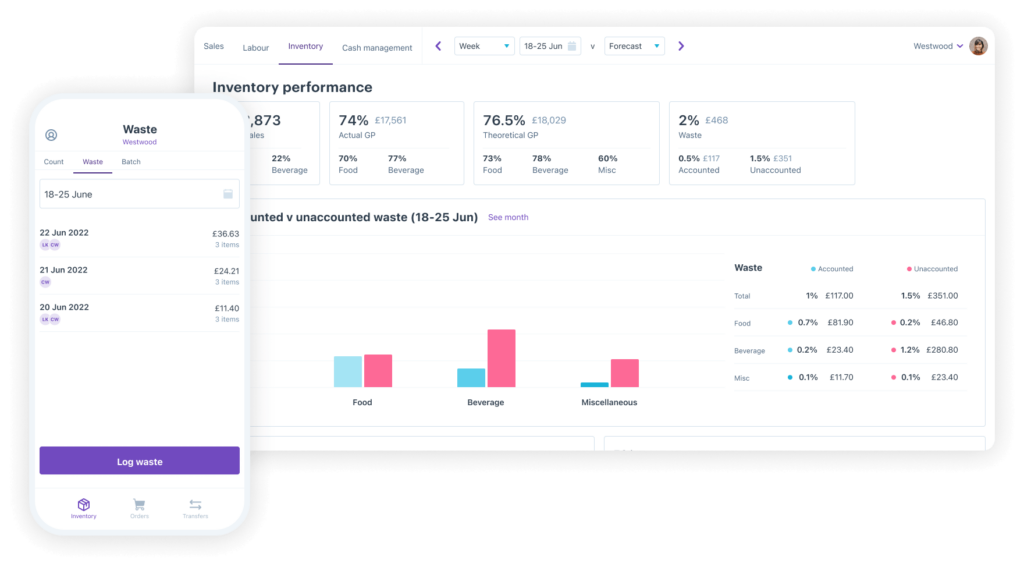
3. Understand where your restaurant waste comes from
Knowing where your waste comes from is key to minimising it. Think about it — if you don’t know where your food waste is coming from, how do you plan to reduce it?
And the funny thing is, 80% of restaurants don’t know what proportion of their waste comes from food preparation, spoilage or plate waste. Crazy 🤯
So what’s the solution to this problem?
Go on — take a guess…
If your answer is technology, you’re right. ✅
Using technology can help you track the source of your food waste. And more importantly, it can help you understand how to reduce food waste from each source. You can see exactly where the food waste comes from, and put measures in place to minimise it.
Take a look at Hartshorn-Hook as an example.
Before using Nory, the restaurant group struggled with real-time insights. This impacted their ability to make quick and informed decisions, making it hard to react quickly to challenges and hurdles impacting profitability.
Today, things are different for Hartshorn-Hook. They now have granular visibility into inventory management, giving them precise control over food costs and waste reduction. They can see where their food waste comes from, and put measures in place to prevent it.
“Nory’s insights mean we can make informed decisions because we know exactly where the business is at. This has been the most important thing as we guide our business into growth.”
George Hartshorn, Food and Beverage Director at Hartshorn – Hook
Find out more about the different types of food waste below.
4. Don’t over-plate your meals
48% of people say portion size is the main reason they don’t eat all their food when eating out. On average, almost 15% of main courses are left uneaten. This contributes to the restaurant food waste percentage, which can quickly add up for your business.
The moral of this story? Don’t over-plate your meals. Instead, find the optimal amount of ingredients for each dish to reduce the chance of leftover food.
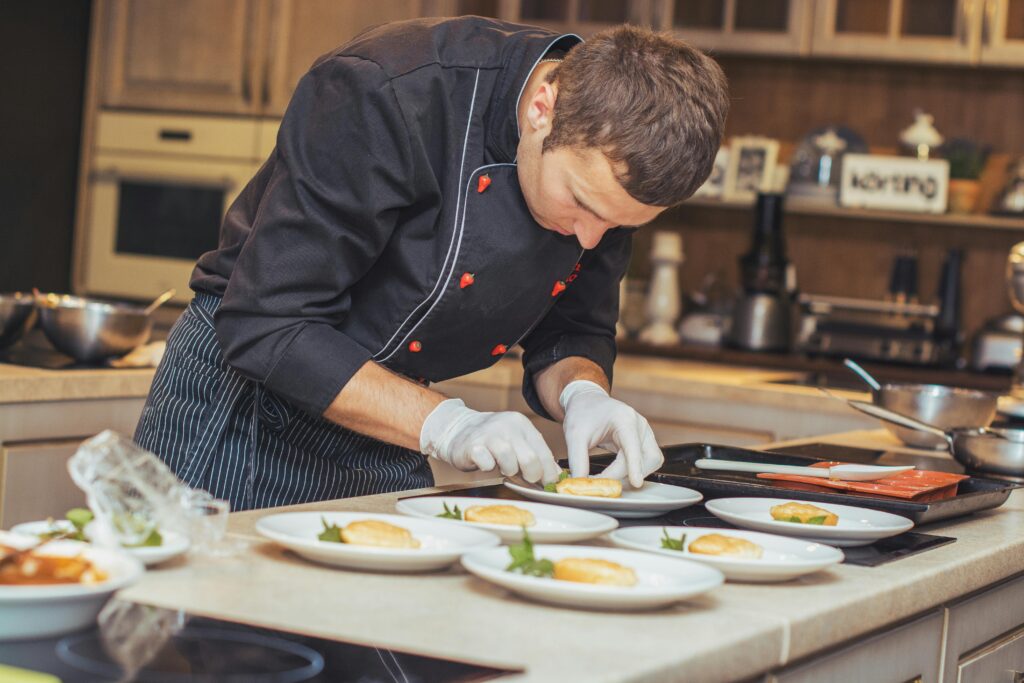
But how do you find the optimal plating quantities?
Here are some suggestions:
- Keep track of plate waste. Monitor how much food is wasted from each plate on your menu. This will indicate areas where over-plating is an issue. If you’re using technology to monitor plate waste, you can use dashboards to visualise this information in a simple and digestible format. Then, you can instantly see which items to reduce without manually trawling through the figures. Keeping an eye on this data can help you better understand your restaurant’s food waste percentage over time.
- Talk to diners. Speak to your customers (either directly or with a feedback survey) to find out their thoughts on plating quantities. This is a great way to find out exactly what people think of your portion sizes and where you can trim quantities to reduce waste.
When you have a better idea of the optimal quantities, you can engineer your menu accordingly.
5. Work with suppliers
Building a strong relationship with your suppliers can go a long way in reducing food waste. Work closely with them to ensure you’re only ordering the amount of food you need.
Flexibility is key. Speak to your suppliers about delivery schedules and minimum order quantities. This allows you to order smaller amounts more frequently, which can reduce spoilage and prevent food from sitting unused for too long.
And remember, good communication with your suppliers can also help you respond quickly to fluctuations in demand — keeping your inventory lean and reducing the chance of waste.
Track restaurant food waste in real-time with Nory
Reducing food waste is a necessity for restaurants in the current climate. It’s good for the environment, it reduces costs, and it increases your profit margins.
But tracking food waste is easier said than done — unless you’re using the right technology. 😏
FAQs about food waste in restaurants
How much food do restaurants waste in the UK?
The figures vary from different sources, but one thing remains the same: restaurants waste a lot of food. Here are some of the key figures:
- Approximately 1.05 billion tonnes of food waste was generated in 2022 — 28% of this came from food services.
- Around 10% of food made for EU consumers (at retail, food services and households) may be wasted.
- Food waste costs the hospitality sector £3.2 billion every year – that’s an average of £10k for each outlet every year.
What are the different types of food waste?
Here are some of the main sources of food waste in restaurants:
- Food preparation waste. This is food that is not used during the preparation of a dish. It is usually caused by trimming and peeling produce and overestimating how much of an ingredient is needed.
- Plate waste. When customers don’t finish their meal, the leftovers are thrown away. This tends to be the result of over-plating or serving poor-quality food.
- Spoilage. Food that’s gone bad due to improper storage or handling. Or, when it turns before it can be used, which is usually the result of overordering.
- Transportation loss. Food gets damaged in transit and can’t be used.
